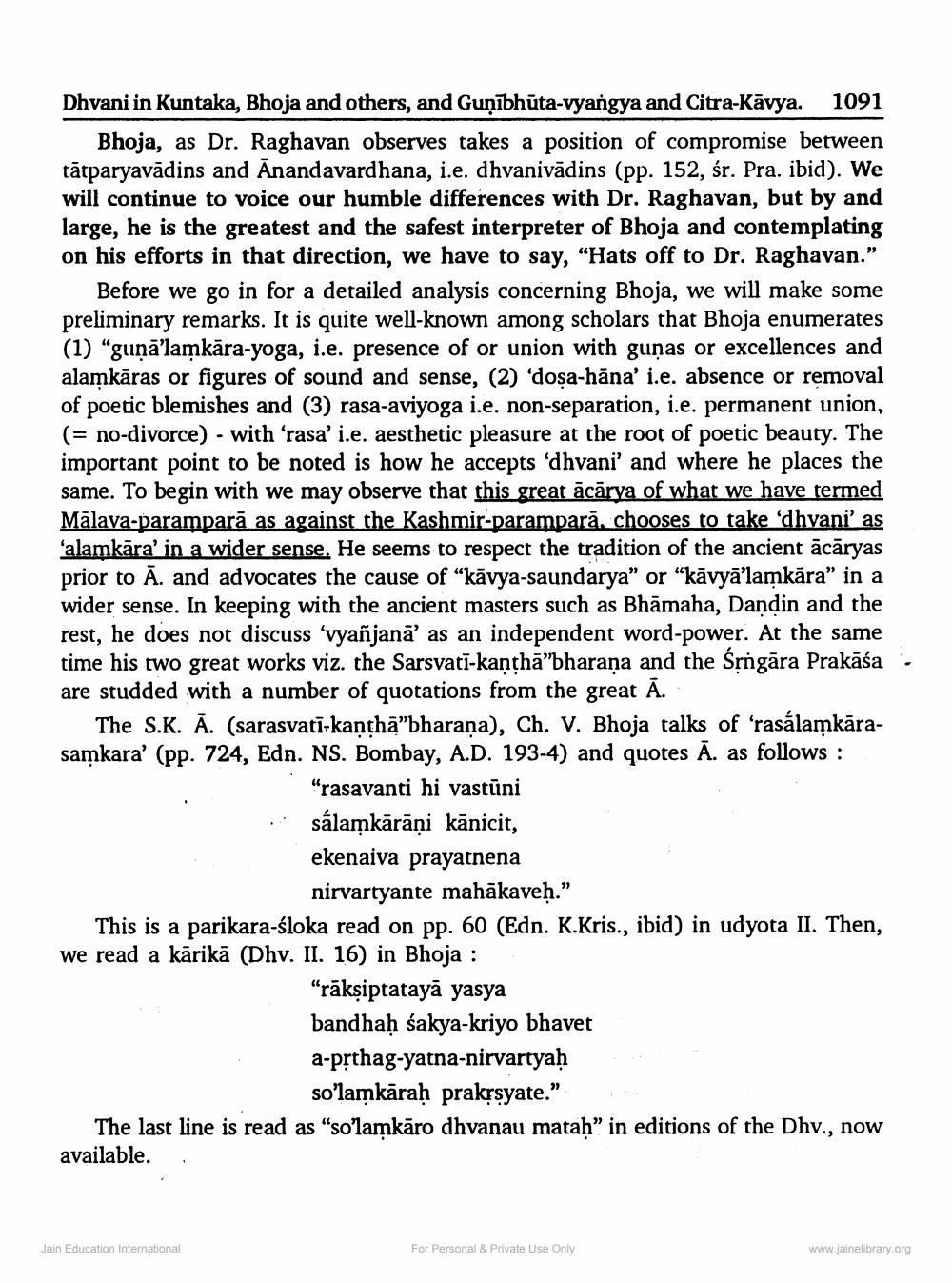________________
Dhvani in Kuntaka, Bhoja and others, and Gunībhūta-vyangya and Citra-Kavya.
1091
Bhoja, as Dr. Raghavan observes takes a position of compromise between tātparyavādins and Anandavardhana, i.e. dhvanivādins (pp. 152, śr. Pra. ibid). We will continue to voice our humble differences with Dr. Raghavan, but by and large, he is the greatest and the safest interpreter of Bhoja and contemplating on his efforts in that direction, we have to say, "Hats off to Dr. Raghavan."
Before we go in for a detailed analysis concerning Bhoja, we will make some preliminary remarks. It is quite well-known among scholars that Bhoja enumerates (1) "guņā'lamkāra-yoga, i.e. presence of or union with guņas or excellences and alamkāras or figures of sound and sense, (2) 'dosa-hāna' i.e. absence or removal of poetic blemishes and (3) rasa-aviyoga i.e. non-separation, i.e. permanent union, (= no-divorce) - with 'rasa' i.e. aesthetic pleasure at the root of poetic beauty. The important point to be noted is how he accepts 'dhvani' and where he places the same. To begin with we may observe that this great ācārya of what we have termed Mālava-paramparā as against the Kashmir-paramparā. chooses to take dhyani' as 'alamkāra' in a wider sense. He seems to respect the tradition of the ancient ācāryas prior to .. and advocates the cause of "kāvya-saundarya" or "kāvyā'lamkāra" in a wider sense. In keeping with the ancient masters such as Bhāmaha, Dandin and the rest, he does not discuss 'vyañjanā' as an independent word-power. At the same time his two great works viz. the Sarsvatī-kanthā”bharaṇa and the Sệngāra Prakāśa - are studded with a number of quotations from the great Ā.
The S.K. Ā. (sarasvatī-kanthā”bharaṇa), Ch. V. Bhoja talks of 'rasálamkārasamkara' (pp. 724, Edn. NS. Bombay, A.D. 193-4) and quotes Ā. as follows :
"rasavanti hi vastūni ... sálamkārāņi kānicit,
ekenaiva prayatnena
nirvartyante mahākaveh." This is a parikara-śloka read on pp. 60 (Edn. K.Kris., ibid) in udyota II. Then, we read a kārikā (Dhv. II. 16) in Bhoja :
"rākṣiptatayā yasya bandhaḥ śakya-kriyo bhavet a-prthag-yatna-nirvartyaḥ
so'lamkāraḥ prakrsyate." The last line is read as "so'lamkāro dhvanau matah” in editions of the Dhv., now available. .
Jain Education International
For Personal & Private Use Only
www.jainelibrary.org




